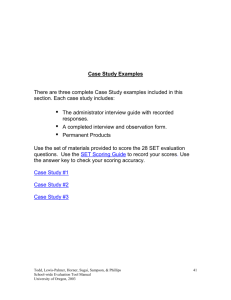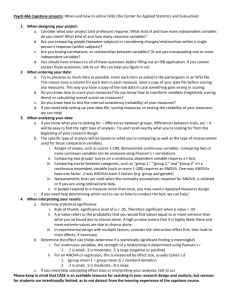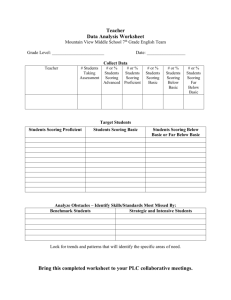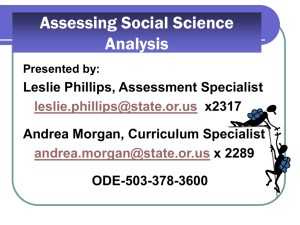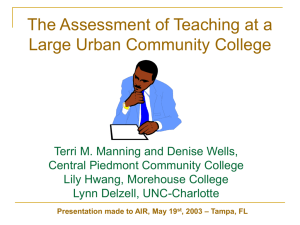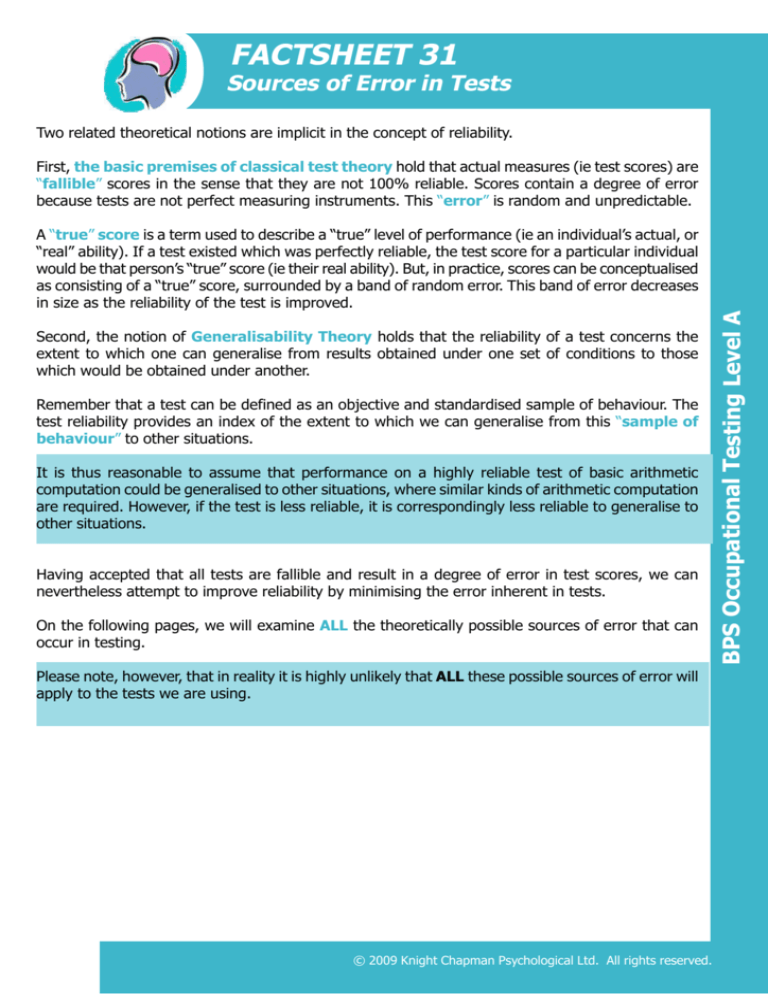
FACTSHEET 31
Sources of Error in Tests
Two related theoretical notions are implicit in the concept of reliability.
A “true” score is a term used to describe a “true” level of performance (ie an individual’s actual, or
“real” ability). If a test existed which was perfectly reliable, the test score for a particular individual
would be that person’s “true” score (ie their real ability). But, in practice, scores can be conceptualised
as consisting of a “true” score, surrounded by a band of random error. This band of error decreases
in size as the reliability of the test is improved.
Second, the notion of Generalisability Theory holds that the reliability of a test concerns the
extent to which one can generalise from results obtained under one set of conditions to those
which would be obtained under another.
Remember that a test can be defined as an objective and standardised sample of behaviour. The
test reliability provides an index of the extent to which we can generalise from this “sample of
behaviour” to other situations.
It is thus reasonable to assume that performance on a highly reliable test of basic arithmetic
computation could be generalised to other situations, where similar kinds of arithmetic computation
are required. However, if the test is less reliable, it is correspondingly less reliable to generalise to
other situations.
Having accepted that all tests are fallible and result in a degree of error in test scores, we can
nevertheless attempt to improve reliability by minimising the error inherent in tests.
On the following pages, we will examine ALL the theoretically possible sources of error that can
occur in testing.
Please note, however, that in reality it is highly unlikely that ALL these possible sources of error will
apply to the tests we are using.
© 2009 Knight Chapman Psychological Ltd. All rights reserved.
BPS Occupational
Testing Level
BPS Occupational
B Intermediate
Testing
Level A
First, the basic premises of classical test theory hold that actual measures (ie test scores) are
“fallible” scores in the sense that they are not 100% reliable. Scores contain a degree of error
because tests are not perfect measuring instruments. This “error” is random and unpredictable.
FACTSHEET 31
Sources of Error in Tests
SOURCES OF ERROR
Sources of random or systematic error include the following:
Item sampling concerns the process by which items are selected for inclusion in the final
version of the test. Items measuring the discrete ability which the test purports to measure
will improve the reliability of the test, whereas questions measuring subtly different abilities,
or those contaminated by other factors, will represent a source of error.
Administration of tests should be standardised, as variations in any aspect of test
administration could be a source of error. Variations in provision of background information,
instructions, style and speed of oral instructions, feedback on practice questions, opportunities
for candidates to ask questions etc all represent potential error if not standardised.
Situational factors, such as lighting, seating, workspace, noise level, distractions and
interruptions, all represent sources of error if not adequately controlled.
Scoring error is particularly problematic for open ended tests (rather than multiple-choice)
which require a degree of subjective evaluation on the part of the assessor. Reliability of
scoring can be increased by two assessors independently scoring responses and subsequently
resolving any disparities. However, multiple choice tests are also prone to a degree of scoring
error, particularly if answer sheets and/or scoring keys are poorly designed. Some tests are
machine scoreable. This tends to reduce scoring error but does not eliminate it altogether.
Practice effects are problematic in the application of widely used tests, because candidates
applying to several organisations may be asked to take the same test on several occasions.
This problem is explored in the article “Graduate Testing - The Problem of Practice Effects”
available from the KCP Training College website.
Guessing the answers to ability test items introduces random error, and so test instructors
should discourage candidates from wild guessing.
© 2009 Knight Chapman Psychological Ltd. All rights reserved.
BPS Occupational
Testing Level
BPS Occupational
B Intermediate
Testing
Level A
Measurement error concerns the quality and composition of the test questions (or items).
Poor items, such as those that are ambiguous, misleading, or those overly dependent on
specialised knowledge will reduce test reliability.







